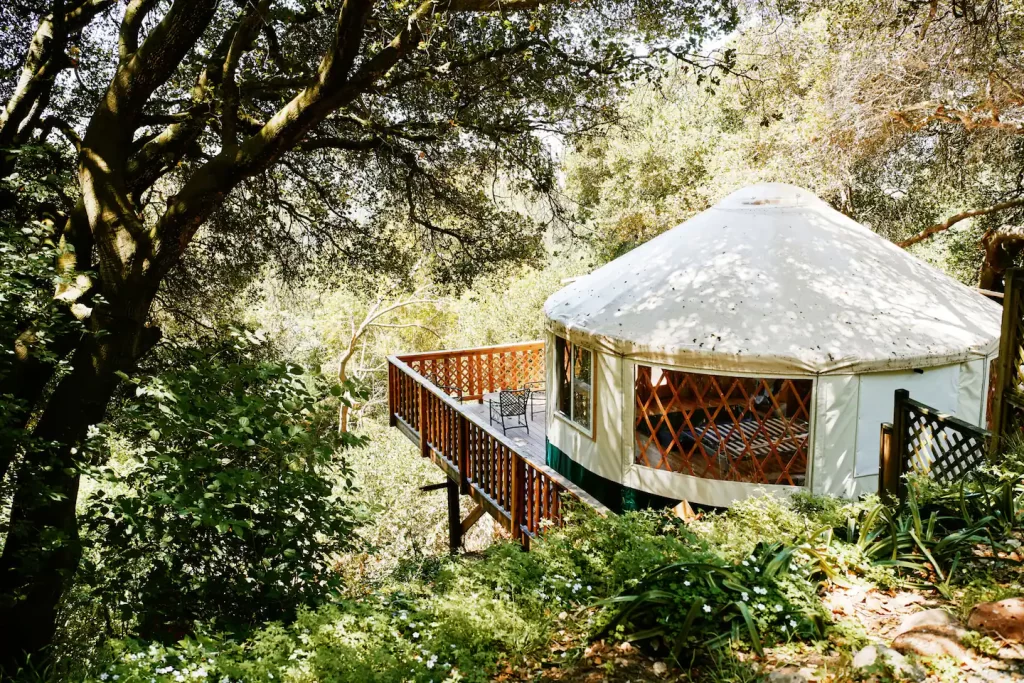
Do you own or rent property in the woods, desert, or along the coast? Why not put up a luxury yurt for an Airbnb glamping business?
Glamping yurts are popping up everywhere. From the Adirondacks in New York, to The Big Sur in California, Terlingua in Texas to the Columbia River in Washington State.
This guy put up an Airbnb yurt near the Grand Canyon. It cost him just $15,000 to set up but brought in $28,000 in just a year.
A yurt is a temporary shelter made of wool felt that is spread over a wooden frame. It looks like a tent but is round, dome-shaped, and is much, much stronger.
Traditionally, they were used by nomadic tribes in Central and North Asia who traveled the steppes looking for food and water. Mongolians call them “ger”, which means “shelter” or “dwelling”. Russians refer to them as “yurta”.
Yurts are portable and easy to set up and take down because they’re made of wood and other light materials. Their sturdy lattices and circular structure stand up to high winds, and the traditional pelt coverings – usually of sheep wool or yak hair – kept the nomads warm.
Here in the US, yurts caught on with the bohemians and hippie homesteaders in the 1970s because they were unconventional, cheap, and easy to build.
Now, modern yurts are semi-permanent structures built with either hardwood or other strong materials like steel or high-grade aluminum. The accordion-like lattices are covered with heavy-duty, weather-resistant canvas or tarpaulin.
Many manufacturers now use NASA-developed insulation, which uses two layers of reflective foil and a layer of bubble wrap in between. It helps keep heat inside in the winter and outside in the summer.
Today’s yurts are widely used for recreation, hospitality, and now, even as permanent dwellings in backcountry and off-grid settings. Modern luxury yurts have wooden floors, heating and cooling systems, glass windows, residential furniture, and porches like regular houses.
Probably one of the most appealing features of a yurt is the skylight in the center of its dome. Usually made of plexiglass, it illuminates the interior and leaves it awash with natural light.
Many resorts, campgrounds, and state and national parks now offer luxury yurt glamping.
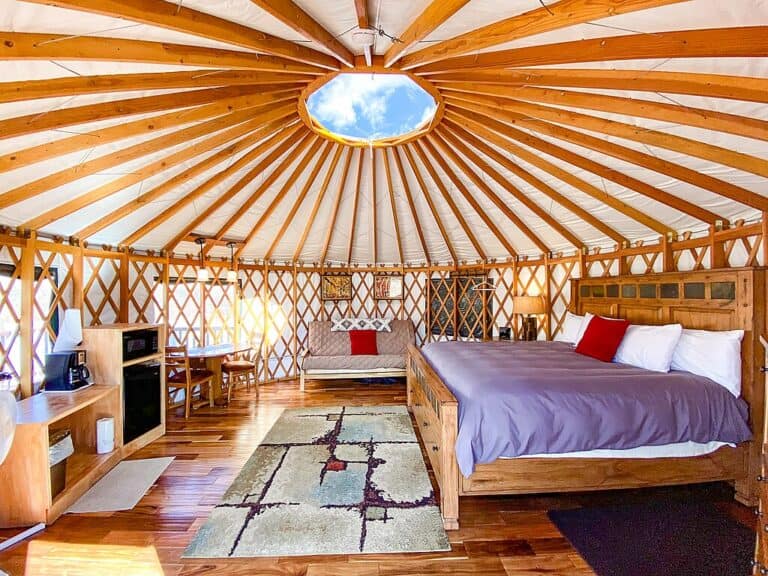
A luxury yurt offers a unique glamping experience that no other type of glamorous camping accommodation can.
Airbnb reported that searches for unique homes have soared since 2019, and yurts are at the top spot – rising at 1,700%!
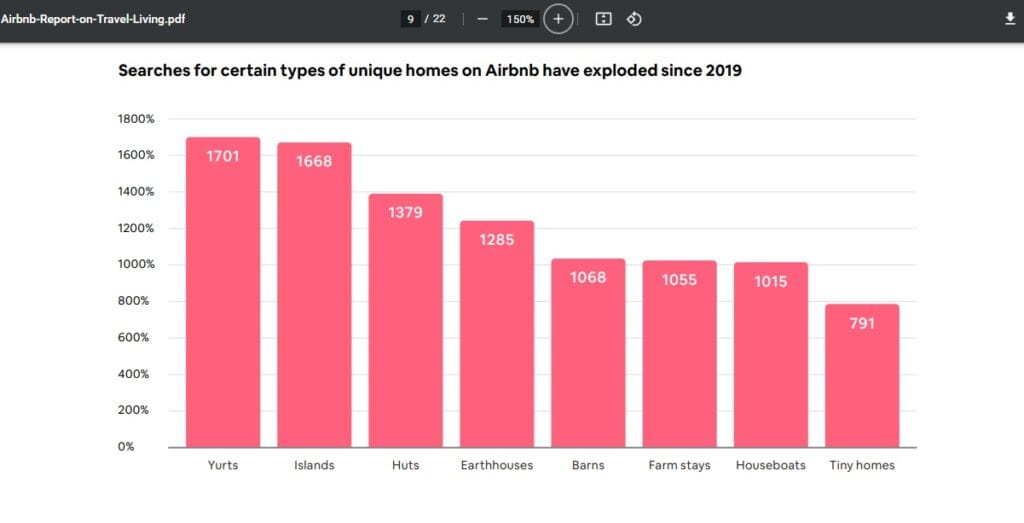
A luxury yurt can offer a unique glamping experience that no other type of glamorous camping accommodation can.
Airbnb reported that searches for unique homes have soared since 2019, and yurts are at the top spot – rising at 1,700%!
Yurt glamping is trending because people always want to experience something new and different.
They go yurt camping for a weekend to see what it was like for Mongolian nomads and warlords like Attila the Hun and Genghis Khan lived. Or just to feel the spiritual vibe from staying in a circular space with no walls.
Like other glamping accommodations, yurt rentals let you feel close to nature while enjoying luxurious creature comforts. Their walls are light enough to let you experience the sounds and smells outside as if you’re out in the wild. But their wooden lattices and insulating materials keep you warm and safe at night.
According to Vrbo, glamping yurts provide the sort of vacation guests won’t forget.
And retreats and upscale resorts have been riding on this trend for some time now. They’ll deck a luxury yurt with amenities like those of a 5-star hotel: room partitions, plush beds, a sitting area, a full kitchen, electricity and plumbing, a fireplace or furnace, a full bathroom, and even a sauna or hot tub.
Campgrounds and wilderness resorts will often place a deck, a picnic table, chairs, a grill, or a fire pit outside for cooking.
Prices per night vary depending on what kind of yurt it is, the amenities offered, and where it’s located.
Basic yurts in the backcountry with no electricity and only the bare essentials can start at about $40 per person per night. Luxury yurts with all the comforts of a modern house can cost up to $350 a night.
Check Airbnb’s Yurts Category to get an idea of the rates across the US.
Read also: Unique Stays Are So Hot Right Now! And They’re Here to Stay!
Yurts with solid walls can last a lifetime with proper care. For soft-sided types, the outside cloth cover has an average lifespan of 10-12 years. But treatments can be applied to make the vinyl fabric last longer.
As for the domes, they’re usually made of thick, impact and UV-resistant acrylic that can stand up to rain, snow, hail, and sun. A central column can also be installed to increase the snow load capacity.
Modern fabric yurts cost between $8,000 and $20,000. Prices vary depending on size and the kind materials used.
Costs go up as soon as you add insulation, extra doors and windows, and other custom-built features like a bathroom and a kitchen.
Other upgrades that can be added are interior walls, a loft, gutter systems, French doors, and operable windows and domes.
Glamping resorts are investing in luxury yurts because they’re unique, affordable, and sturdy. They’re easy to set up and maintain. And since they can last a long time, the return on investment for businesses is huge.
If you’re deciding what type of structure to use for a glamping vacation rental, here are the advantages you can expect from a luxury yurt over other types of glamping accommodations such as tents, sheds, small cabins, or tiny houses. A modern luxury yurt is:
While tents consist of nylon or polyester material and are held up only by poles and stakes, yurts are built with wooden or metal trellises and rafters (roof poles). The latticed walls create tension and compression which make yurts durable yet resilient.
Bears and intruders won’t easily be able to get inside yurts. They could probably cut through the fabric but will be blocked by the strong latticework.
Modern luxury yurts can last decades and can be refurbished with new outer fabric every several years. Because they’re sturdy, many people use them as permanent dwellings.
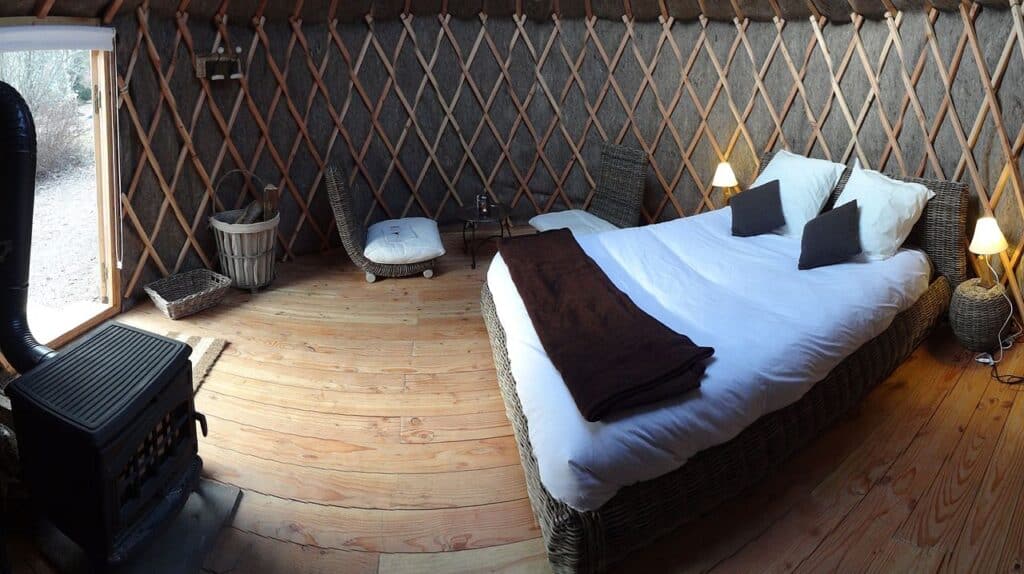
Since a truly comfortable glamping experience requires a considerable amount of space, yurts are ideal. Most yurts will sleep anywhere between 8 and 15 people. A luxury yurt can be outfitted with multiple bedrooms, even a loft.
A luxury yurt will come out cheaper to buy than an accessory dwelling unit (ADU), an RV, or a tiny house.
Pre-fab DIY yurt kits can be purchased online. With basic carpentry skills, you can put one up yourself or with the help of a friend. Depending on its size, you could have it standing and ready to be furnished in one weekend. (Common sizes are between 16 feet and 36 feet.)
Building the platform for your yurt would take longer, as would installing electrical, heating, and plumbing systems.
You can order a luxury yurt based on your preferences for size and exterior colors. Their open design will also give you unlimited flexibility with the placement of your furniture and partitions.
Designs are also limitless. You could go traditional, rustic, exotic/Eurasian, mid-century, African safari, Bohemian, or any way you want.
Yurts withstand a variety of climates, including strong winds, rain, and snow – even temperatures -50 degrees C (-58 F) – so you can use them year-round. They can be cozy in the winter – with the help of a wood-burning stove – and breezy in the summer when the windows are open and flaps are rolled up.
Nothing beats a yurt’s circular skylight that illuminates the interior during the day and lets you see the stars at night – and the northern lights if you’re up in Alaska. Most tents don’t have an opening on the roof and are usually closed from all sides.
Some yurt domes even have a lifter that opens to let air in and a bronze tint that helps keep the interior cool. Others come with a bug net or shade cloth to block bugs and bright sunshine. Insulation can also be added during cold weather.
Yurts have a big “green” factor because their frames are made of wood, a sustainable material that breaks down easily.
They’re built with an open, circular design which uses less construction materials while maximizing the overall interior space.
Yurts are also cheaper to heat and cool. Due to the open layout, the air circulates in a single round space, keeping the heat or cold inside for longer.
They’re also built on a platform so that once they’re dismantled, they leave little or no footprint.
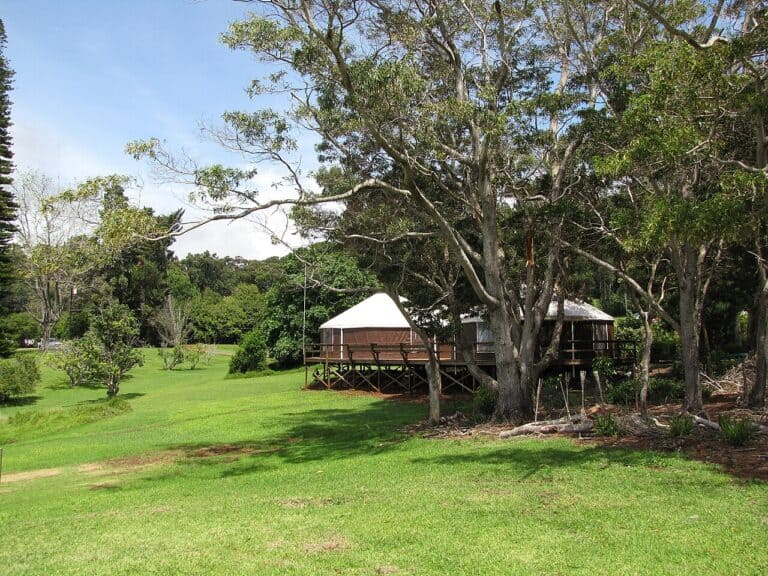
Because yurts are generally considered temporary structures, they’re less regulated than brick-and-mortar vacation rentals.
But be sure to check with your local building department because your county or state may have different rules that require you to get a building permit. This is especially true if you want to build a yurt on a concrete foundation or add electricity, gas, plumbing, and sewage. (In remote places without water or septic hookups, though, you’d have to use a water tank and a composting toilet.)
The permitting process can sometimes be long and unpredictable, generally because of unfavorable reactions from neighbors, conservation rules, or how a planning officer might interpret your business concept.
Whether you want to add a luxury yurt to an existing glamping business or start a new operation altogether, you’re on the right track.
Putting one up would be easier, quicker, and cheaper than setting up a pre-made tiny house or converting a shed into a vacation rental.
Yurts are future-proof and worth the investment.
But, as stated above, check with your local and state authorities to see what building codes and zoning restrictions may apply.
Our reviews are made by a team of experts before being written and come from real-world experience. Read our editorial process here.
Some of the links in this article may be affiliate links, which can provide compensation to us at no cost to you if you decide to purchase a paid plan. These are products we’ve personally used and stand behind. This site is not intended to provide financial advice. You can read our affiliate disclosure in our privacy policy.
About the author:
This website is operated and maintained by Short Term Sage LLC. Use of the website is governed by its Terms Of Service and Privacy Policy.
Short Term Sage LLC may link to content or refer to content and/or services created by or provided by third parties that are not affiliated with Short Term Sage LLC. Short Term Sage LLC is not responsible for such content and does not endorse or approve it.
We use cookies to help improve, promote and protect our services. By continuing to use this site, you agree to our privacy policy and terms of use.